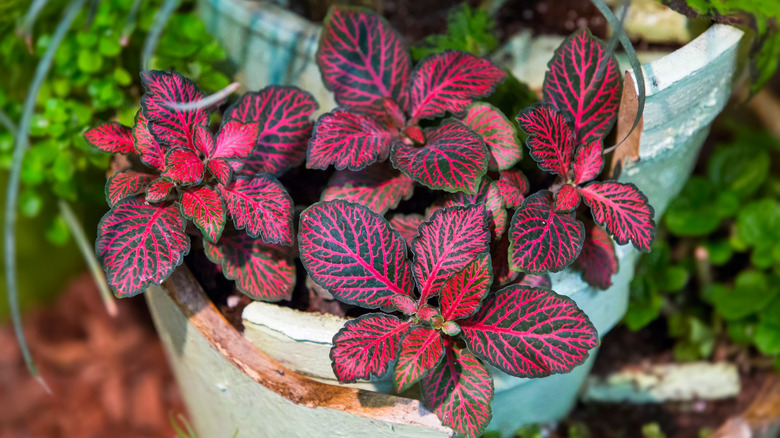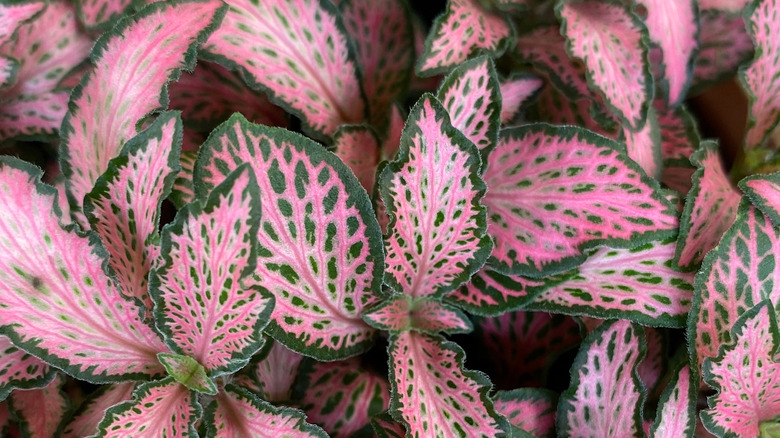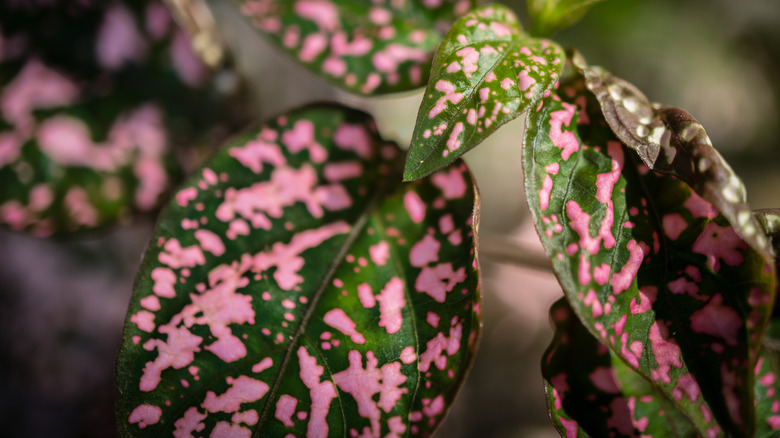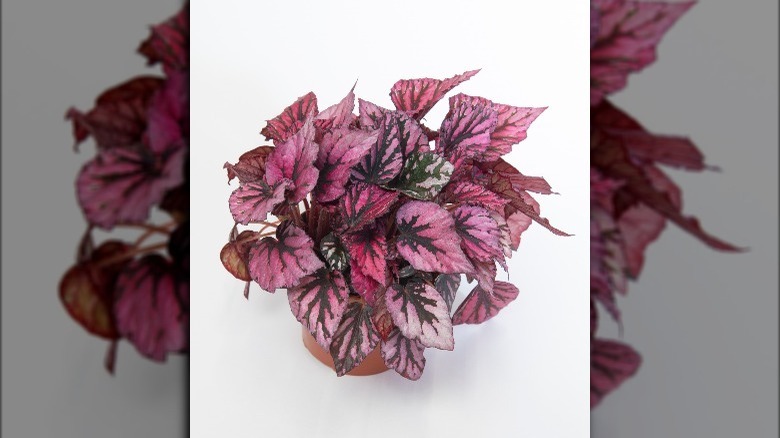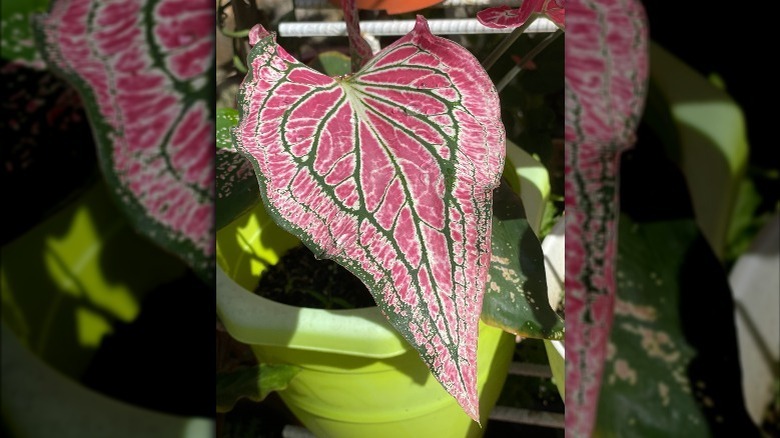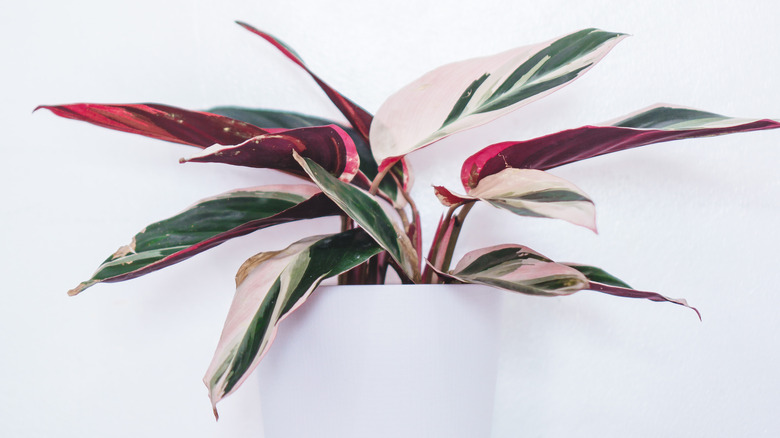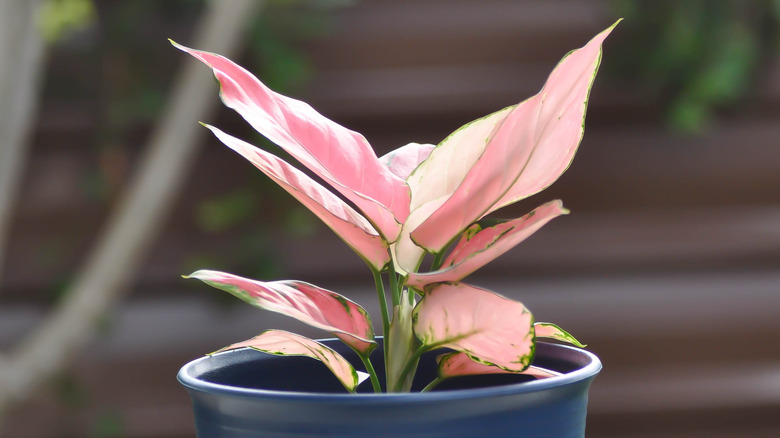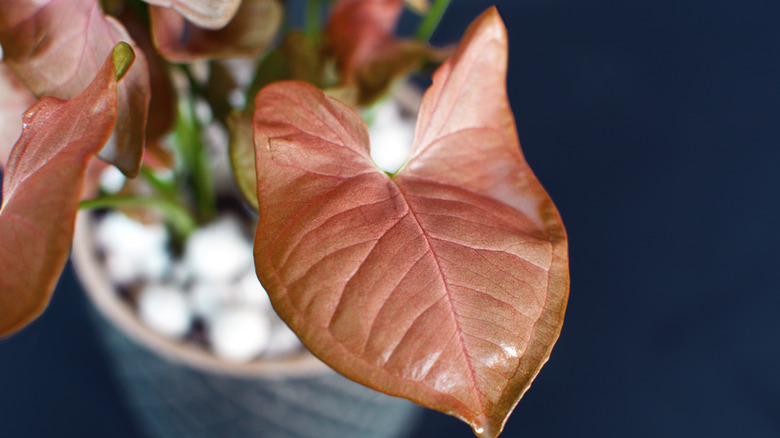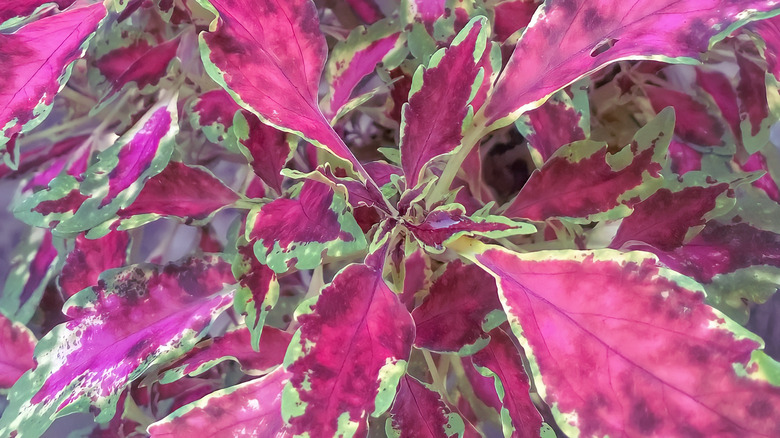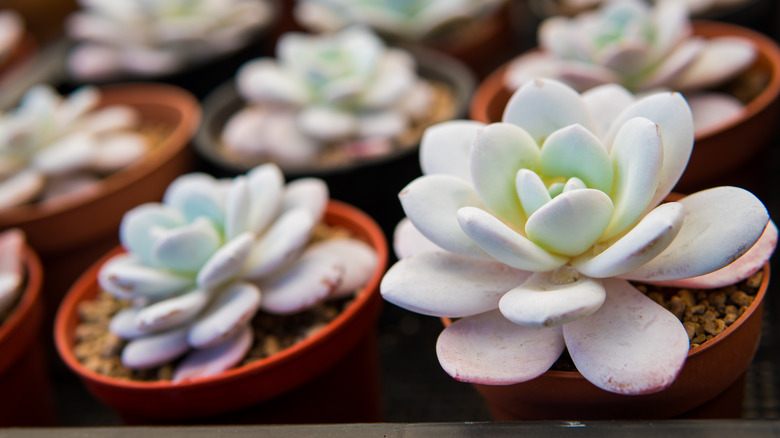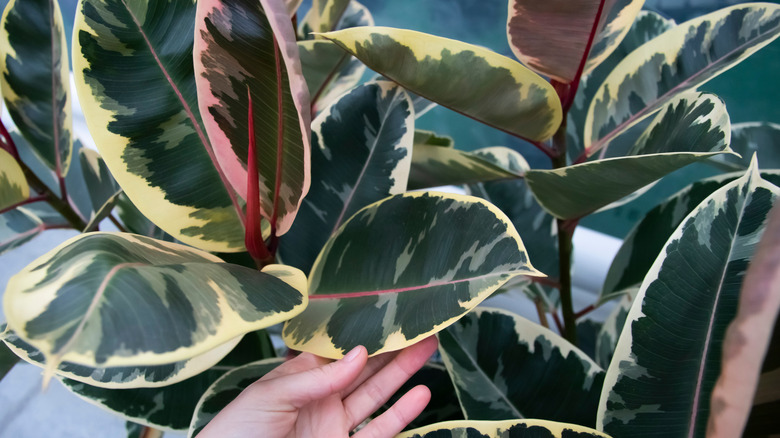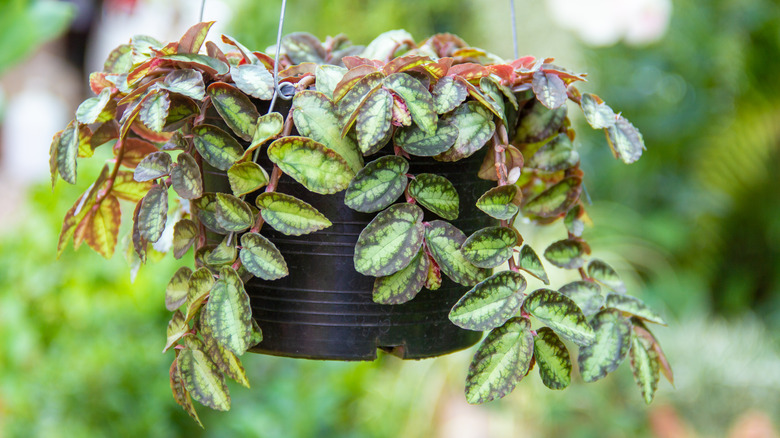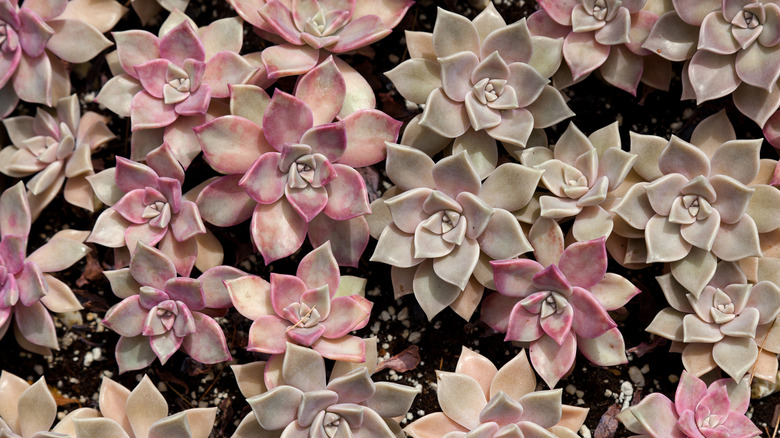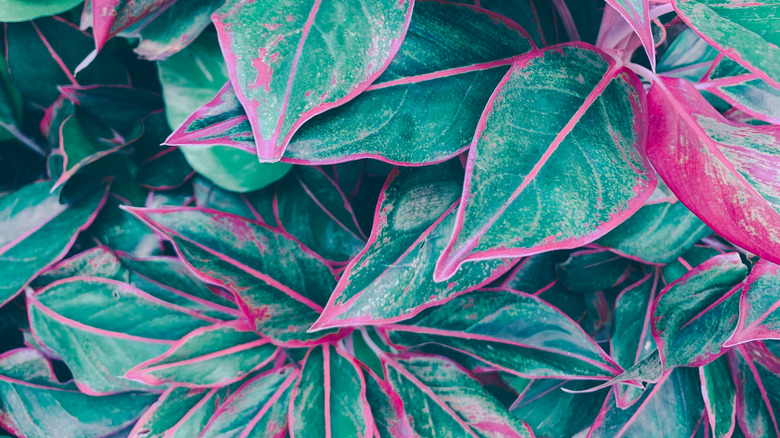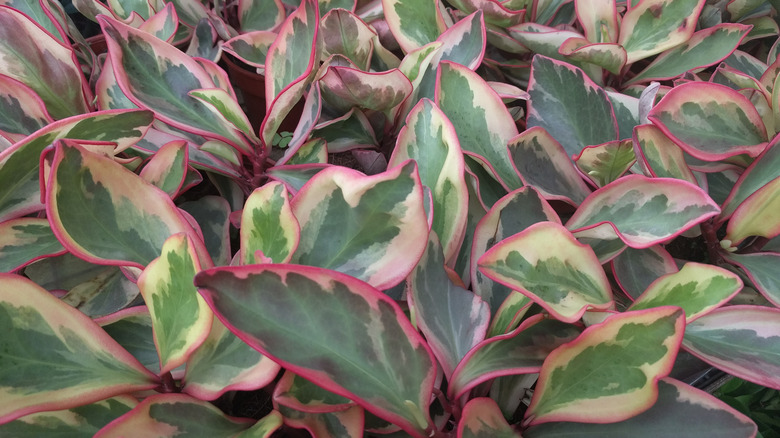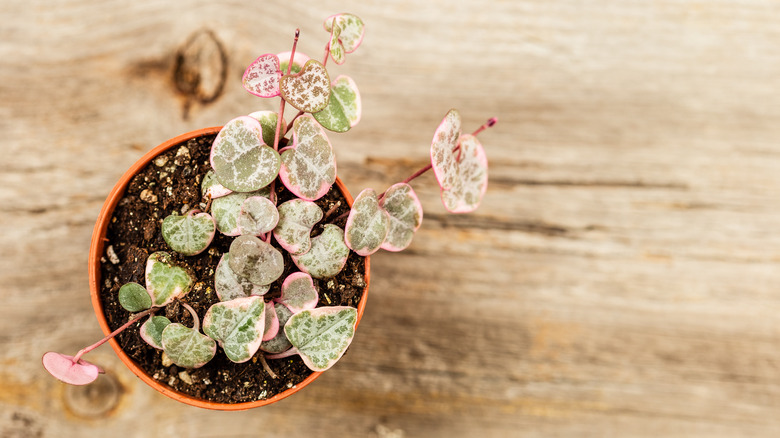15 Pink Plants Your Houseguests Will Be Obsessed With
Millennial pink has made its way into the interior design scene and cemented its rightful place in the trendiest of home decor. And guess what? It's here to stay beyond your freshly painted walls!
New Decor Trends named the classic hue one of the hottest trends in 2021, too. According to the outlet, pink got a quiet upgrade in 2021, making its way from accent furniture to any sort of unique touch you can work into a room. One of the easiest ways to feature this fun color? Houseplants — yes, you heard that right. When it comes to impressing with pink, greenery is the way to go!
There's an abundance of pink houseplants, ranging everywhere from bright and bold to pastel and pretty. Whether you're looking for something easy or you want to challenge yourself with a more needy plant, we've got all of the best options for a natural pop of pink.
1. Nerve plant
Nerve plant, or mosaic plant (Fittonia albivenis) is the prettiest perennial you never knew you needed. According to The Spruce, this plant is perfect for those corners of your home that are calling for a sprawling spread of vines. It's minimalistic, with a set of glossy leaves covered in pink and red veins, and it very rarely blooms — if it does, the flowers will be a nice off-white color that's easy to work into any color scheme.
The only catch? Nerve plants are notoriously tricky. They need to be moist around the clock, or you may dry out the colorful leaves. Keep this one in bright, indirect sunlight, or leave it under a set of fluorescent lights to appease its tropical nature.
2. Polka dot plant
Polka dot plants (Hypoestes phyllostachya) are similar to nerve plants, but with a little less definition in the color of the veins. Instead, polka dot plants look exactly like what you'd imagine them to look like: the dark green leaves are covered in specks of pink!
Costa Farms explains that these plants require regular watering, and the soil must be moist at all times — but if you miss a watering, you should be able to save the leaves from drying out. Polka dot plants can be grown in lower light areas inside the home, but they perform their best with a bit of direct sun on them (which, hey, don't we all?).
3. Begonia Beleaf
Feeling something a little more moody, and a little less millennial? Try your hand at caring for a Begonia Beleaf (Begonia Maori Haze). The leafy plant offers a rich color that leans into a burgundy shade, so if you're not one for pink, the Begonia Beleaf could be a great way to give this trend a shot.
According to The Little Botanical, begonias need consistent, bright sunlight, and regular pruning to keep their leaves from yellowing. Be sure to stick to a frequent but careful watering schedule, too — this plant is prone to root rot!
4. Pink Symphony
If you really want to impress your houseguests, pick up a Pink Symphony (Caladium bicolor) — this symphony will lead to a whole choir of compliments. Often referred to as a "fancy-leaf" Caladium, the Pink Symphony is elegantly bold, with the green leaves nearly covered in a spray of colorful hot pink.
Learn2Grow says that this stunning plant requires a little less light, since it performs best with some shade. Water your Pink Symphony each morning, pausing to give it a second go. Just be sure to provide adequate drainage so that the soil doesn't get too moist!
5. Triostar stromanthe
The triostar stromanthe (Stromanthe sanguinea) is the vibrant pop that your kitchen needs. Ditch the store-bought plain roses, and show off a centerpiece that your guests will be awed by! This prayer plant is known for its gorgeous streaks of baby pink.
Since this is a tropical plant, The Spruce recommends mimicking a rainforest environment. Some sun is great, but avoid any direct sunlight. It thrives best in a humid environment, so regular watering and misting is a must. If you're located in a colder climate, water your triostar stromanthe a little less to maintain some dryness.
6. Pink Dalmatian
The festive and fun Pink Dalmatian plant (Pink Dalmatian Aglaonema) has pointed leaves scattered with pops of pink, and a rosy root that'll tower over your planter the more it grows.
Bloomscape suggests watering your Pink Dalmatian plant once the top of the soil looks dry; that way, you can avoid waterlogging the roots. Don't leave this plant in full sun, or the leaves will burn and break away. Too much shade will also prevent the pink from fully coming through. To get the most color from your Pink Dalmatian, find a happy medium with bright, indirect light.
7. Pink Syngonium
Pink Syngonium (Syngonium podophyllum), or the Arrowhead plant, is one of the more common rosy houseplants. These vines are fast-growers, so be prepared for any room to be overtaken by these colorful leaves.
The older your Pink Syngonium plant is, the more water it will need, says Garden for Indoor. When it's young, it will only require light to medium watering, but as it ages, you'll need to keep up with the soil to ensure it doesn't dry out. A steady source of indirect sunlight will keep this vine growing longer and longer, so be prepared to prune!
8. Pink Chaos
Maybe millennial pink is too 2020, and you want to give the neon trend a shot instead. Well, Pink Chaos (Pink Chaos Coleus) is the bright and youthful jolt of color that your greenery is missing. They're one of the most vibrant houseplants available, with saturated pink-to-purple leaves happily overshadowing any potential blooms.
According to Nana's Bloomers, this perennial must be watered regularly, but with a solid draining system to avoid added moisture. It can thrive in any sort of lighting condition, ranging from bright sun to cool shade, but staying on top of its watering is key.
9. Laui
The Laui (Echeveria Laui) plant is so pastel pink that it's practically white, so if you can't quite part with the neutrals in your decor, this succulent is a great first step.
In order to preserve its rosy blooms, be sure to properly water your Laui plant. Succulents Network explains that a soak and dry technique is the best approach — as in, fully saturating the soil and letting it dry — since overwatering could easily kill the plant. You can keep the Laui plant indoors or outdoors, but ensure it's in full sun for the best growing environment possible!
10. Pink Rubber Plant
If you love the height of a Monstera but want a pop of pink, there's a colorful compromise you're going to want to order immediately: the pink Rubber Plant (Ficus Elastica). This Variegated version has some pink edging on its large leaves.
House Fur notes that it's crucial to regularly turn this tree to keep the leaves from burning; if there's too much direct sunlight, the leaves could fall off. Instead, keep it in consistent, indirect sunlight. You'll also want to water it on a regular schedule, but get rid of any extra water by tipping the pot or adding a drain system to your planter.
11. Flowering inch plant
The flowering inch plant (Tradescantia tricolor) is a rosy, voluminous perennial, featuring triangular leaves covered in stripes of deep fuchsia, white, and light, baby pink.
This plant will grow quickly, so get ready to prune! Plant Care Today recommends a weekly watering schedule in the warmer months, but always check the status of the soil before you do — too much moisture could stunt growth. Indirect sunlight is best for the flowering inch plant, but be sure there's still a bit of sun hitting the leaves at all times, or they could look dull and colorless.
12. Ghosty
Ghost plants (Graptosedum) are powder pink, with stunning rosettes that make it a minimalist plant to add to your lineup. The Ghosty is not the most vibrant of pink houseplants, but it's the perfect compliment to bolder decor!
As with most succulents, the best course of care here is to use the "soak and dry" method, which will ensure you don't overwater. Adequate and proper sunlight are crucial, too — if this succulent is grown in the shade, it'll look cool-toned and blue. When grown under full, bright sun, the rosettes will be a gorgeous light pink, per Succulents and Sunshine.
13. Pink Diamond
The Pink Diamond plant (Cordyline Fruticosa) is primarily green, but with hints of bright pink on the borders of its lengthy leaves. Most of the color is concentrated in the stalk, which will draw any houseguests' eyes to the pretty piece of natural decor.
The Jungle Collective says that direct light is no threat for the Pink Diamond — in fact, it's welcome! A good watering is suggested once or twice a week, depending on how dry the soil is feeling. Whatever you do, don't mist this one too often, or you may be battling not-so-pretty plant fungus.
14. Peperomia Jelly
With a name like Peperomia Jelly (Peperomia Clusiifolia), you might expect this houseplant to feature pops of purple, but this unforgettable variation is streaked with strictly pink.
The Jelly plant doesn't have a very large footprint, but its ombre dark green, light green, and blush leaves still make an impact. Try to keep it in bright, indirect sunlight indoors. Watering from the bottom with a saucer is also recommended. This will help direct as much water as possible to the roots, and prevent the leaves from getting bogged down, which should preserve its color, as noted by Plant Care Today.
15. String of Hearts
There's a lesser known counterpart to the String of Pearls that might have the burst of millennial pink you've been mulling over: the String of Hearts (Ceropegia woodii variegata). This creamy pink trailing plant is long and thin, and makes for an effortless accessory to any existing succulents in your home.
Succulents and Sunshine says that if you want the pink hue to be more pastel, you should place it in some shade. The more sun that hits the houseplant, the darker its leaves will be. The outlet also recommends the standard soak and dry watering method, which will allow it to bloom with small flowers in the late summer.
